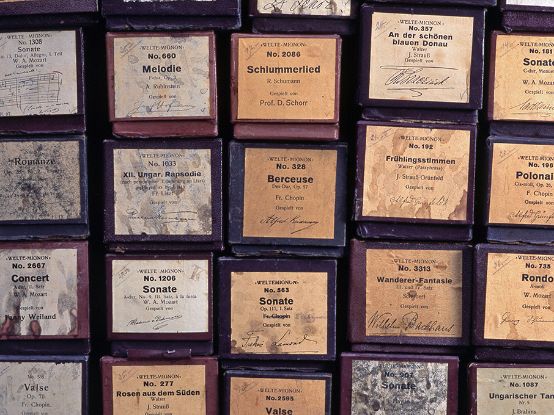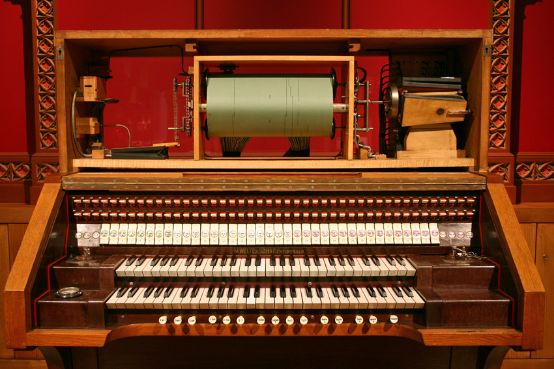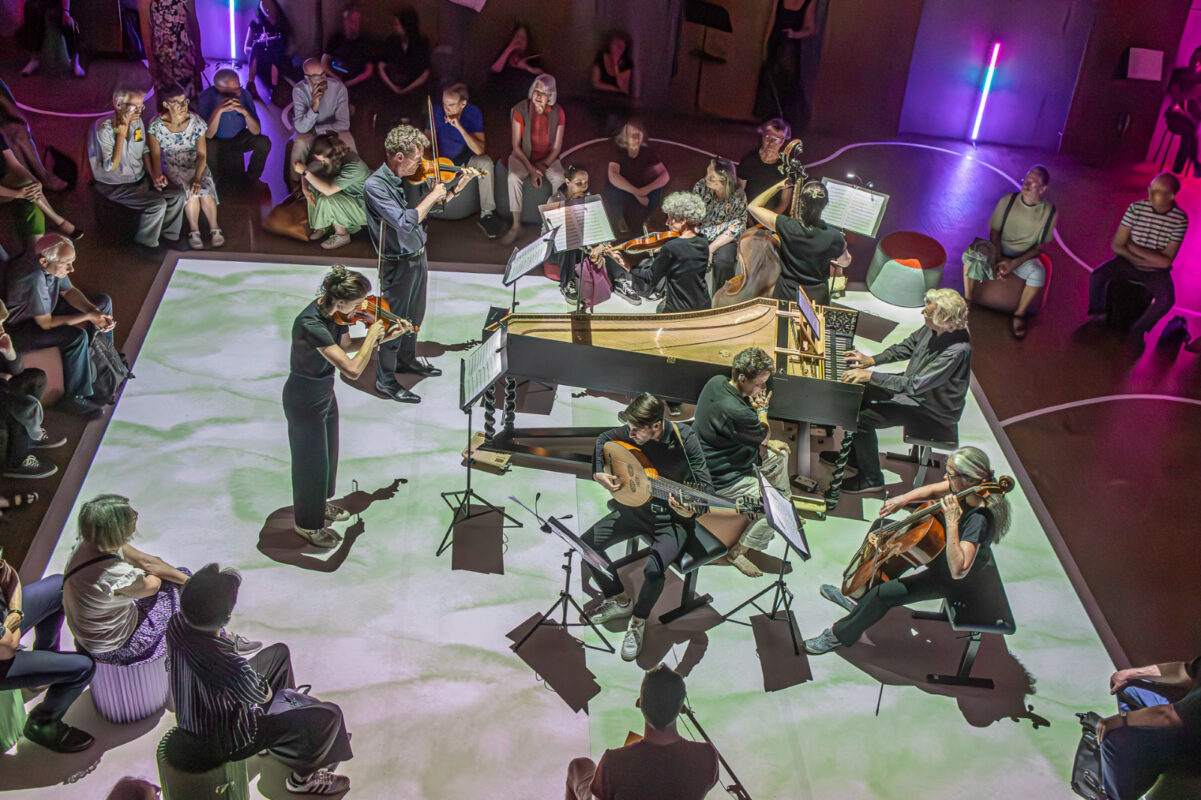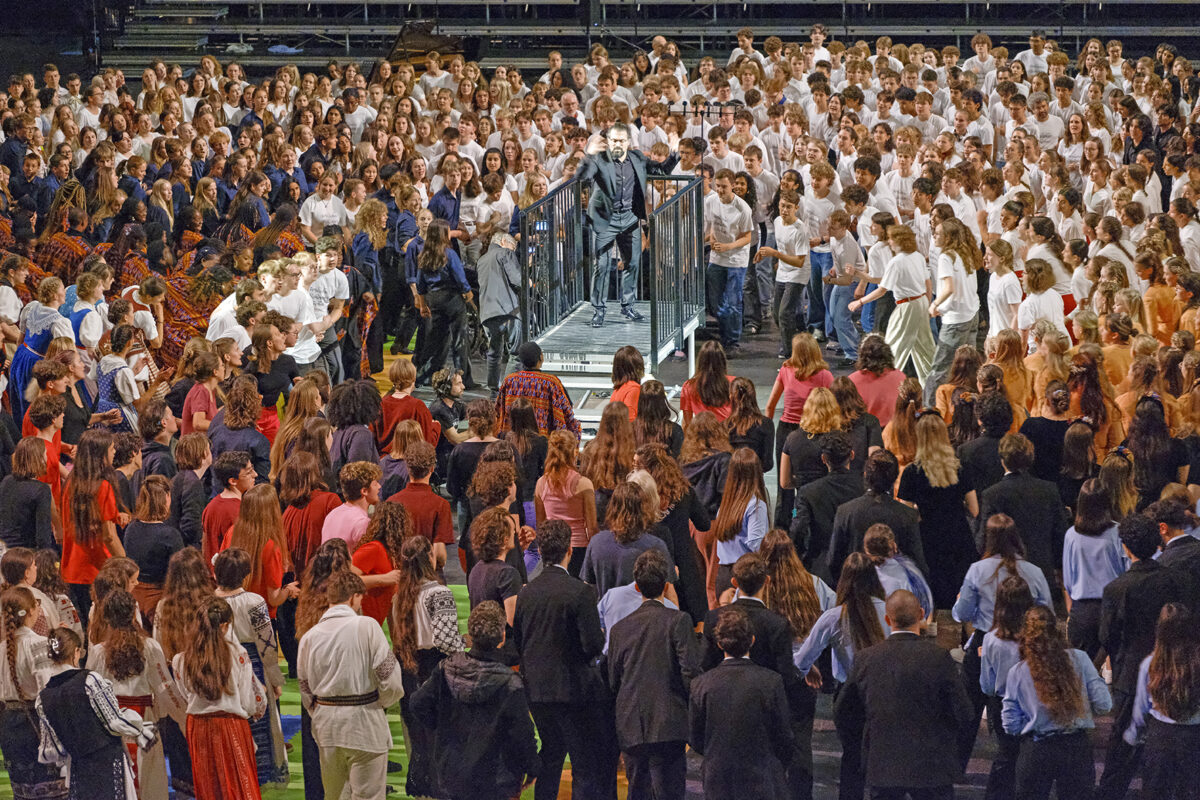Scriabin looked at the fingers
At the beginning of September, students and interpretation researchers met for a master class at the Künstlerhaus Boswil. The fact that it is now possible to meticulously analyze the playing of artists from the past can open up new horizons for piano pedagogy.

The Seewen Museum of Music Automatons is home to a historic mechanical organ. It should have been installed in the Britannic, the sister ship of the Titanic, which sank in 1912. This did not happen; the Britannic also sank during the First World War. The Britannic organ has become the starting point for special research in recent years. This has led to music students today being able to listen to long-dead composers or concert pianists - such as Rachmaninov or Eugène d'Albert - when their playing is reproduced on ultra-modern grand pianos. This opens up completely new and highly interesting perspectives for piano pedagogy. A master class in the Boswil House of Artists has shown this in an impressive way.
Paper rolls as sound sources
The Britannic organ was a product of the Freiburg-based manufacturer Welte, which caused a sensation at the beginning of the 20th century, particularly with mechanical pianos. Personalities such as Carl Reinecke, Ferruccio Busoni, Teresa Carreño, Artur Schnabel and Edwin Fischer and composers such as Debussy, Saint-Saëns, Scriabin, Reger, Grieg, Granados, Mahler and Gershwin immortalized their playing on these pianos. It was recorded on paper rolls using a complicated compressed air mechanism. The dynamics were also recorded, using a process that can hardly be reconstructed today.
-

The console of the Britannic organ. Photo: Museum for Music Automatons, Seewen SO
Teams from the Bern University of the Arts (HKB), in collaboration with the Swiss National Sound Archives in Lugano, first digitally recorded and made accessible the large holdings of music rolls for the Britannic organ. The experience gained in the process also allowed the music rolls of the Welte-Mignon mechanical piano to be digitally recorded. The data was processed in such a way that it could be transferred to a Yamaha Disklavier, a kind of modern but far more precise version of the Welte-Mignon.
Studying the recordings of Busoni, Debussy or Grieg has not only added to the knowledge of historical interpretation practice that had already been gained thanks to early acoustic recordings. The paper rolls provide more precise evidence of dynamics, touch and pedal techniques - albeit not one hundred percent reliable - than the noisy gramophone recordings. Above all, the educational value is inestimable: students can follow the historical playing on the keyboard of the Disklavier, trace it with their own fingers or play and correct their own reproduction of the model until they can copy it exactly.
Of course, the aim is not to reproduce interpretations of the golden age of piano virtuosity one-to-one. However, the process helps to better understand the tactile and visual intentions of the time. The pianists and interpretation researchers Manuel Bärtsch and Sebastian Bausch, who developed the Welte-Mignon project "Magic Piano" developed at the HKB, worked with the students at the Boswil master class on works by Chopin, Liszt, Schubert, Schumann, Brahms and Scriabin as well as on the means of expression typical of the time. The Welte-Mignon transcriptions, for example, showed how freely and spontaneously even the composers themselves dealt with their works. They played carefree rubati, by no means always synchronized left and right hands or arpeggiated entire chordal passages and even omitted whole bars seemingly at random.
Unresolved issues and potential
Questions remain unanswered: Many virtuosos recorded works for Welte while passing through, without putting much effort into it - some probably without realizing that these testimonies would last for decades. It may therefore be that one or the other took the recording rather lightly. It is also unclear how reliable the technique for recording the dynamics actually was. It cannot even be completely ruled out that something was added in post-production. The rather mysterious method of capturing the dynamics could possibly have simply consisted of Welte employees making notes during the recordings, after which the dynamic differences were then added in a further step.
The examination of the Welte rolls opens up surprising perspectives: One could apply the procedure to master classes with today's virtuosos by having them record their interpretations on the Disklavier, which would then be analyzed like the historical Welte recordings. In fact, the Boswil master class can be seen in a wider context: as a sign of the upheavals in music education triggered by social media. There is now an unmanageable range of online courses and coaching, each of which has its own strengths. Above all, they can record data accompanying a teacher's playing in real time (velocity, pedal use, time a key is released and so on). It is up to the HKB's Institute of Interpretation to take the step from historical data collection and processing to the pedagogical use of the findings.
Torsten Möller
A liberating look back. What can be deduced from recordings made using Welte-Mignon technology?
Article in Swiss Music Newspaper 6/2021(PDF)








